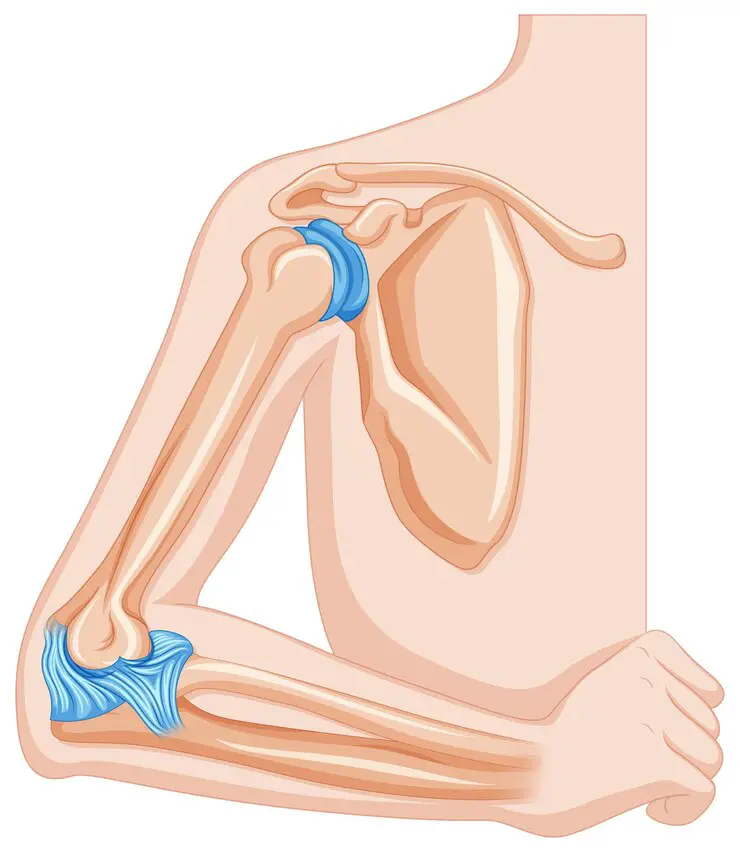The Ultimate Kitchen Elixir: A Professional Guide to a Natural Wellness Drink
Abstract
Imagine a simple, homemade beverage that helps soothe joint discomfort, boosts energy levels, and supports balanced blood sugar—all by harnessing ingredients you likely already keep in your pantry. This comprehensive guide explores the science, preparation, and best practices for a five‑ingredient wellness drink featuring raw honey, cinnamon, turmeric, apple cider vinegar, and chia seeds. In a modern world where quick fixes and synthetic supplements abound, this natural elixir offers a gentle, cost‑effective alternative. Over the next 2,000 words, we delve into each component’s health properties, detailed preparation steps, consumption timing, and creative variations to seamlessly integrate this tonic into your daily routine.
1. Introduction
In recent years, interest in natural remedies and functional foods has surged as consumers seek holistic approaches to health. Among these, an unassuming drink—often called a “kitchen elixir”—has risen to prominence for its purported capacity to:
-
Alleviate joint pain
-
Enhance energy and vitality
-
Regulate blood sugar levels
What sets this beverage apart is its simplicity: five ingredients, most of which people already own, combine to form a synergistic blend. Each substance contributes unique bioactive compounds, and together they create an anti‑inflammatory, antioxidant, and metabolism‑supporting formula.
This article provides an in‑depth, professional exploration covering:
-
The scientific rationale for each ingredient
-
Detailed preparation instructions
-
Optimal consumption schedules for various health goals
-
Potential modifications and complimentary practices
-
Precautions, FAQs, and evidence‑based insights
By the end, you will have a thorough understanding of how and why to incorporate this natural wellness drink into your life.
2. The Five Cornerstone Ingredients: Properties and Benefits
2.1 Raw Honey: Nature’s Healing Sweetener
Key Compounds:
-
Antioxidants (flavonoids, phenolic acids)
-
Enzymes (glucose oxidase)
-
Prebiotic oligosaccharides
2.1.1 Anti‑Inflammatory Action
Raw, unprocessed honey contains bioactive flavonoids and phenolic acids that combat oxidative stress and inhibit pro‑inflammatory pathways (e.g., COX‑2) in the body. This can lead to reduced swelling and discomfort in joints.
2.1.2 Digestive Support
The enzymes in raw honey—particularly glucose oxidase—aid digestion by helping break down complex sugars. Additionally, honey’s prebiotic oligosaccharides foster a healthy gut microbiome, which is increasingly recognized as foundational to overall well‑being.
2.1.3 Sustained Energy Release
Unlike refined sugar, honey’s natural sugars (glucose and fructose) are absorbed at different rates, providing an initial energy boost followed by more prolonged blood sugar stability.
2.2 Cinnamon: The Ancient Spice of Balance
Key Compounds:
-
Cinnamaldehyde
-
Polyphenols
-
Essential oils
2.2.1 Blood Sugar Regulation
Numerous studies have demonstrated cinnamon’s capacity to improve insulin sensitivity and reduce fasting blood glucose levels. Cinnamaldehyde appears to enhance glucose uptake in cells and inhibit digestive enzymes that break down carbohydrates too quickly.
2.2.2 Cardiovascular Support
Cinnamon exhibits antithrombotic and lipid‑lowering effects. Its polyphenols can attenuate LDL oxidation and improve vascular health.
2.2.3 Anti‑Inflammatory and Antimicrobial Properties
By modulating inflammatory cytokines and exhibiting antimicrobial actions against certain pathogens, cinnamon contributes both to joint comfort and immune resilience.
2.3 Turmeric: The Golden Root of Relief
Key Compound:
-
Curcumin
2.3.1 Joint Health and Pain Relief
Curcumin, turmeric’s primary active molecule, inhibits nuclear factor‑κB (NF‑κB) and cyclooxygenase (COX) enzymes, reducing the biochemical signals that drive pain and inflammation in osteoarthritis and rheumatoid conditions.
2.3.2 Neuroprotection and Cognitive Support
Curcumin crosses the blood‑brain barrier and may enhance levels of brain‑derived neurotrophic factor (BDNF), supporting optimal cognitive function and potentially delaying age‑related decline.
2.3.3 Antioxidant and Cellular Protection
Turmeric’s potent antioxidant capacity helps scavenge free radicals, protecting cells from oxidative damage that underlies aging and chronic disease.
2.4 Apple Cider Vinegar: The Fermented Tonic
Key Components:
-
Acetic acid
-
Probiotic microorganisms (in raw, unfiltered vinegar)
-
Trace minerals (potassium, magnesium)
2.4.1 Digestive Enhancement
The acetic acid in apple cider vinegar (ACV) stimulates gastric secretions, improving protein breakdown and nutrient absorption. Its probiotic content supports gut ecology, bolstering immune defenses.
2.4.2 Glycemic Control
Clinical trials have demonstrated that consuming 1–2 tablespoons of ACV before a carbohydrate‑rich meal can attenuate postprandial glucose spikes by up to 30 percent, making it a useful adjunct for blood sugar management.
2.4.3 Mineral Bioavailability and Immune Support
ACV’s slight acidity enhances calcium solubility, facilitating bone health, while its antimicrobial peptides can help maintain a balanced microbiome.
2.5 Chia Seeds: Tiny Nutritional Powerhouses
Key Nutrients:
-
Omega‑3 fatty acids (alpha‑linolenic acid)
-
Calcium and phosphorus
-
Dietary fiber
2.5.1 Stabilized Blood Sugar
Chia seeds form a gel when hydrated, which slows carbohydrate digestion and glucose absorption, leading to more stable blood sugar curves.
2.5.2 Bone and Cardiovascular Support
High in calcium and phosphorus, chia seeds contribute to skeletal strength. Their omega‑3 content reduces triglycerides and inflammatory markers, supporting heart health.
2.5.3 Satiety and Digestive Health
The soluble fiber in chia seeds expands in the stomach, promoting fullness and regular bowel movements.
3. Step‑By‑Step Preparation Guide
The following protocol yields one serving of the wellness elixir. Adjust ingredient quantities proportionally for multiple servings.
3.1 Ingredients
| Ingredient | Quantity |
|---|---|
| Raw honey | 1 tablespoon |
| Ground cinnamon | ½ teaspoon |
| Turmeric powder | ½ teaspoon |
| Apple cider vinegar (raw, unfiltered) | 1 tablespoon |
| Chia seeds | 1 tablespoon |
| Lukewarm water or plant‑based milk (almond, oat) | ≈ 200 mL |
| Optional: black pepper | pinch (enhances curcumin bioavailability) |
| Optional: lemon juice | squeeze (for flavor) |
3.2 Equipment
-
Small bowl or glass jar
-
Measuring spoons
-
Teaspoon or small whisk
-
Serving glass or mug
3.3 Procedure
-
Soak the chia seeds
-
Combine 1 tablespoon chia seeds with 100 mL lukewarm water in a small bowl.
-
Stir briefly, then allow to rest for 10–15 minutes until a gel forms.
-
-
Blend the dry spices
-
In your serving glass, combine ½ teaspoon ground cinnamon and ½ teaspoon turmeric powder.
-
(Optional) Add a small pinch of freshly ground black pepper to enhance curcumin absorption.
-
-
Incorporate the liquids
-
Pour in 1 tablespoon raw honey and 1 tablespoon apple cider vinegar.
-
Gently stir or whisk until the honey dissolves completely.
-
-
Add the chia gel
-
Scoop the chia seed gel into the mixture.
-
Top up with the remaining 100 mL lukewarm water or plant‑based milk.
-
Stir thoroughly to ensure uniform distribution of seeds and spices.
-
-
Final touches
-
Taste and adjust: add a squeeze of lemon juice for brightness or a touch more honey for sweetness.
-
Serve immediately for optimal texture.
-
4. Consumption Guidelines
4.1 Timing and Frequency
| Health Objective | Recommended Intake |
|---|---|
| General energy boost | Once daily, morning, on empty stomach |
| Joint pain relief | Twice daily (morning and evening) |
| Blood sugar management | 15–20 minutes before meals |
4.2 Practical Tips
-
Empty stomach: Consuming before breakfast maximizes absorption of bioactive compounds.
-
Consistency: A minimum four‑week trial is advisable to gauge effects on inflammation and glucose control.
-
Hydration: Follow with an additional glass of water, especially when using chia seeds, to support digestion.
5. Scientific Rationale and Evidence
5.1 Synergy of Bioactives
When combined, the polyphenols of honey, cinnamon, and turmeric operate on multiple inflammatory pathways, while apple cider vinegar and chia seeds moderate glycemic response. This multiplex approach addresses root causes of metabolic dysfunction and pain:
-
Inflammation reduction: Dual inhibition of COX and NF‑κB pathways
-
Antioxidant support: Scavenging of reactive oxygen species
-
Glycemic control: Delayed carbohydrate breakdown and enhanced insulin sensitivity
5.2 Clinical Highlights
-
Turmeric: Meta‑analyses show curcumin supplementation (500–2,000 mg/day) reduces osteoarthritis pain scores by 30 percent or more compared to placebo.
-
Cinnamon: Trials indicate a 10–20 percent decrease in fasting plasma glucose after 8–12 weeks of 1–6 g daily cinnamon consumption.
-
Apple Cider Vinegar: A study in Diabetes Care (2004) revealed that 20 g ACV before a high‑glycemic meal lowered postprandial glucose by 34 percent.
-
Chia Seeds: In a randomized crossover trial, chia supplementation (37 g/day) reduced systolic blood pressure and improved endothelial function.
6. Customizations and Complementary Practices
6.1 Flavor Variations
-
Citrus boost: Add fresh orange or grapefruit juice (50 mL) for vitamin C enhancement.
-
Herbal infusion: Steep a green tea bag in the lukewarm base for additional antioxidants.
-
Spice mix: Incorporate cardamom or ginger powder to diversify anti‑inflammatory compounds.
6.2 Dietary Pairings
-
Pair with a protein‑rich breakfast (Greek yogurt, scrambled eggs) to stabilize blood sugar further.
-
Follow with fiber‑dense whole grains (oatmeal, buckwheat) to complement chia seed benefits.
6.3 Lifestyle Synergies
-
Gentle exercise: Low‑impact activities (yoga, swimming) synergize with the drink’s anti‑inflammatory profile.
-
Sleep hygiene: Turmeric and cinnamon’s mood‑regulating effects may support restful sleep when consumed in the evening.
-
Stress management: Honey’s mild anxiolytic properties can calm the nervous system, especially when paired with deep‑breathing exercises.
7. Precautions and Contraindications
-
Allergies: Individuals allergic to bee products or spices should avoid this drink or substitute with tolerated alternatives.
-
Medication interactions: High doses of turmeric may interact with blood thinners; consult a healthcare provider if you take anticoagulants.
-
Gastroesophageal reflux: Apple cider vinegar’s acidity can aggravate reflux; dilute further or consume with a small snack.
-
Blood sugar monitoring: Diabetic patients on medication should closely monitor glucose levels, as improved insulin sensitivity may necessitate dosage adjustments.
8. Frequently Asked Questions
Q1: Can I prepare this drink in advance?
It is best consumed immediately to preserve chia seed texture and prevent separation. If necessary, refrigerate for no more than 2 hours and stir before drinking.
Q2: Will regular coffee or tea negate the drink’s effects?
Caffeine may mildly elevate blood sugar acutely, but when consumed separately—30 minutes before or after—coffee or tea should not significantly impair the elixir’s benefits.
Q3: Is there an ideal season to drink this tonic?
Year‑round use is appropriate; however, its warming spices may be especially comforting in cooler months, while the hydrating chia gel can be refreshing in summer when prepared over ice.
9. Conclusion
This five‑ingredient kitchen elixir exemplifies how simple, accessible foods can deliver profound health advantages. By harnessing the anti‑inflammatory prowess of raw honey, cinnamon, and turmeric, the digestive and glycemic support of apple cider vinegar, and the nutrient density of chia seeds, you create a truly synergistic wellness tonic. When prepared and consumed correctly—mindful of timing, dosage, and complementary lifestyle practices—this natural remedy may ease joint discomfort, elevate energy, and foster balanced blood sugar.
For those committed to holistic well‑being, integrating this drink into your daily routine offers a low‑cost, low‑risk strategy with the potential for significant returns in comfort and vitality. As with any health intervention, individual results may vary, and it is always advisable to consult healthcare professionals when managing chronic conditions. Nonetheless, this ancient‑meets‑modern tonic stands as a testament to the healing power that resides in your kitchen.






